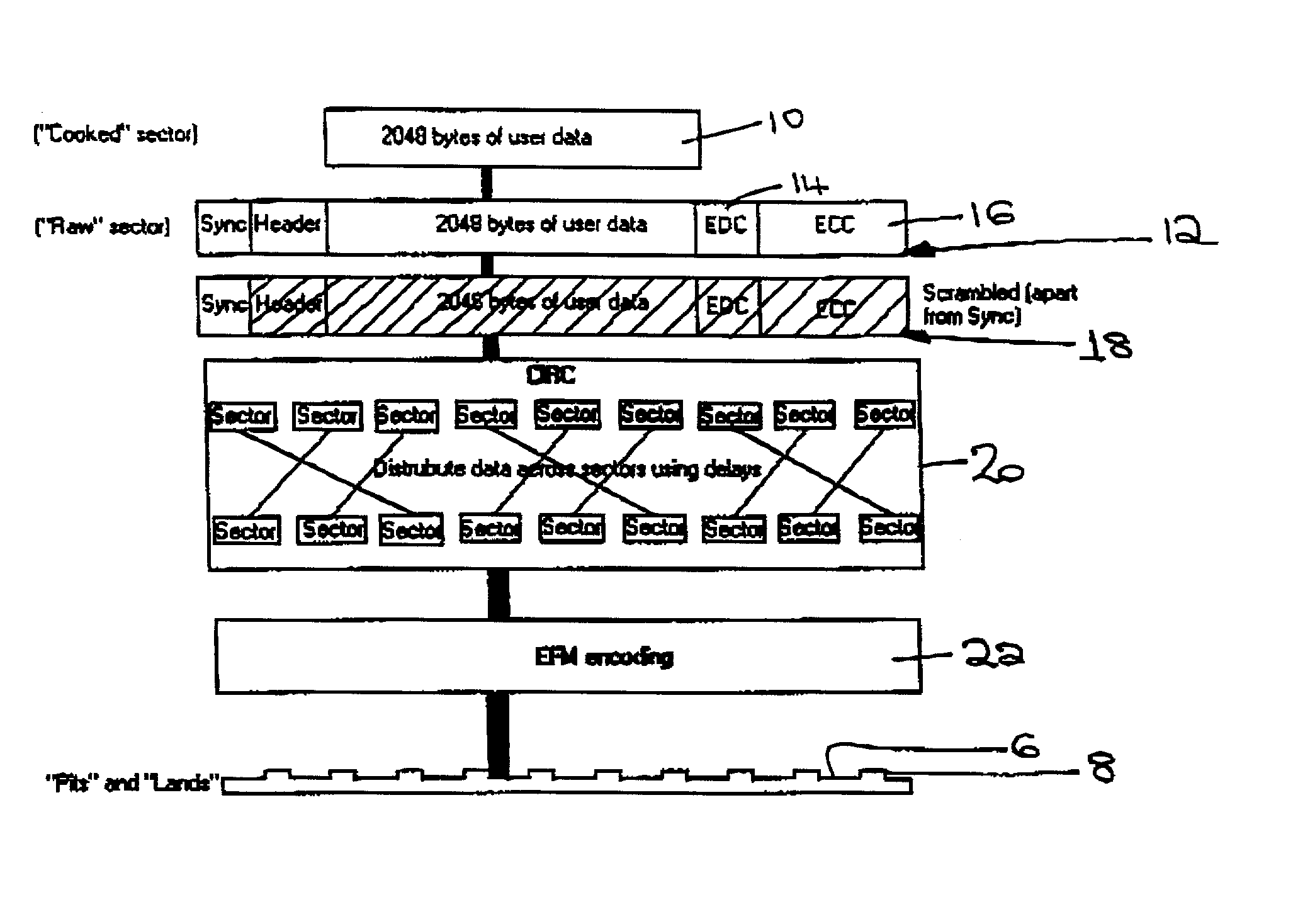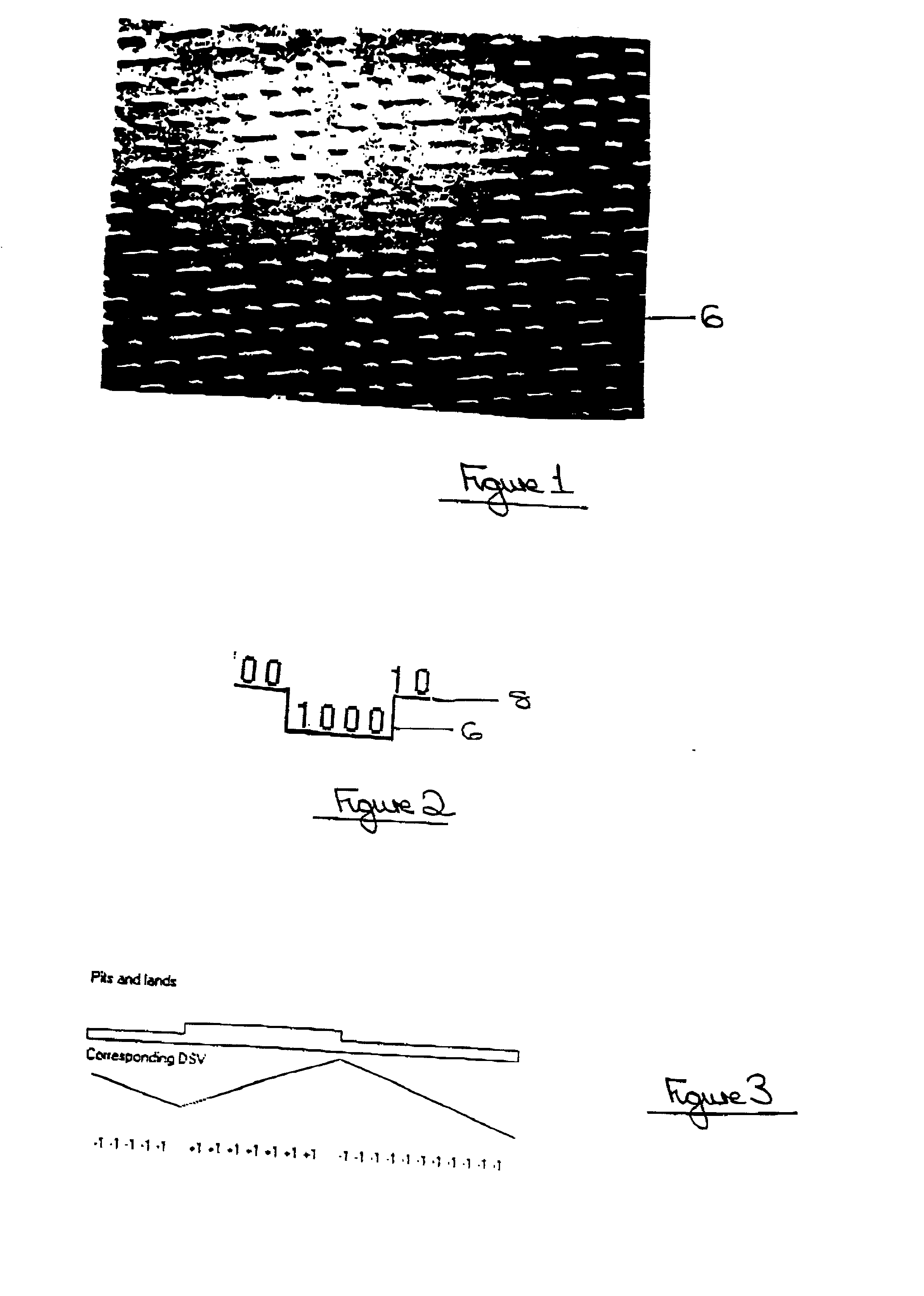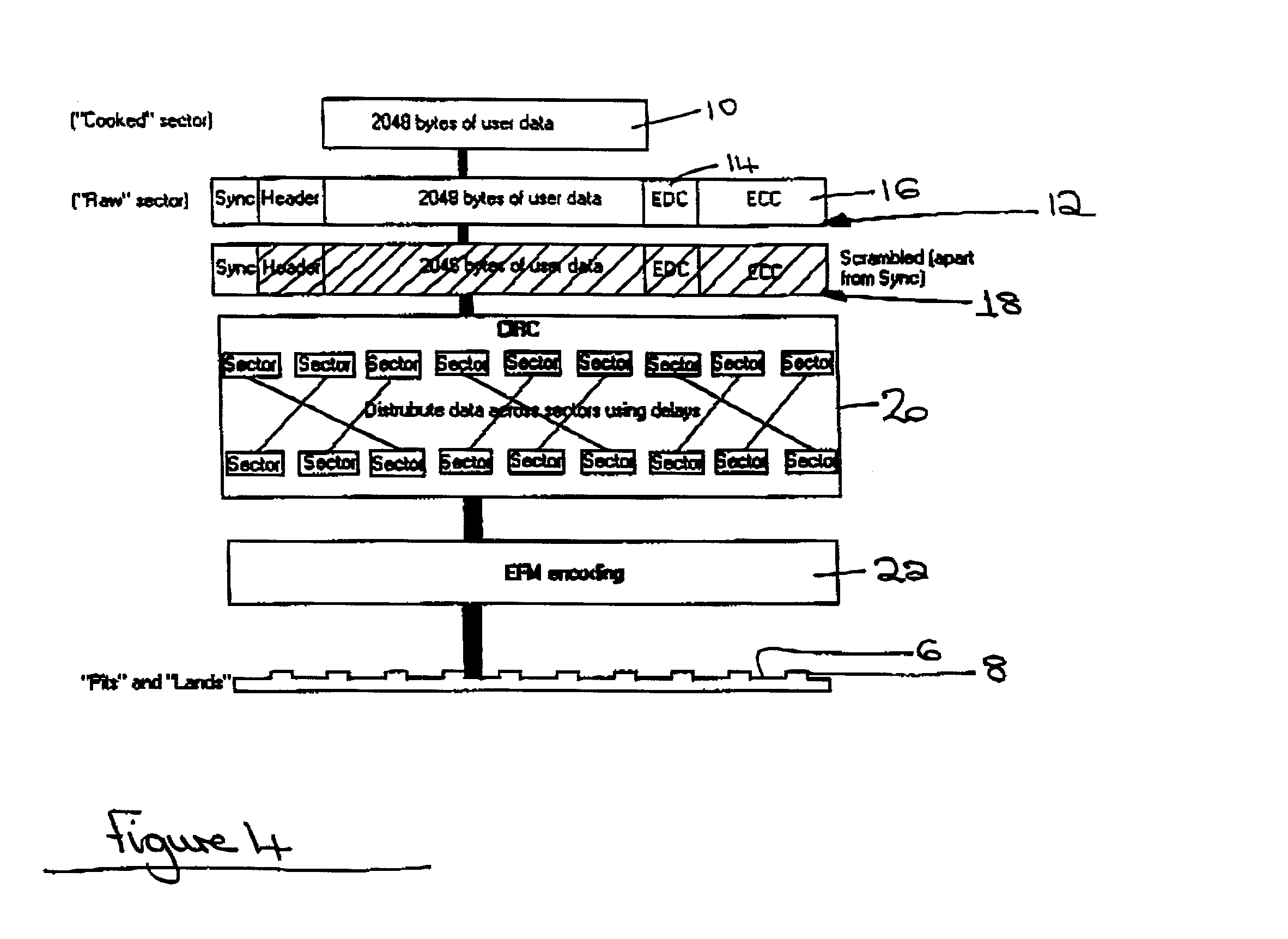Copy protection for optical discs
a technology of optical discs and copy protection, applied in the field of copy protection of optical discs, can solve the problems of uncorrectable or "bad" sectors on the disc, limited processing power and memory of commercially available cd writers, and high cost of design, writing and debugging
- Summary
- Abstract
- Description
- Claims
- Application Information
AI Technical Summary
Problems solved by technology
Method used
Image
Examples
Embodiment Construction
[0059] In the description which follows, the invention is described specifically by reference to the encoding of a CD-ROM and hence with reference to the use of the present invention for copy protecting such a CD-ROM. However, it will be appreciated that the present invention is not limited to use with a CD-ROM and finds application to all data carrying optical discs. Specifically, the invention is applicable to all formats of CDs and to all formats of DVDs.
[0060] Furthermore, the description which follows gives one example of the encoding of data onto a CD. Other encoding modes are possible and it will be appreciated that the invention is not limited to the encoding mode.
[0061] FIG. 1 shows an enlarged view of part of a CD showing the pits 6 thereon. As is well known, these pits extend along a spiral track on the surface of the disc and are separated by lands.
[0062] FIG. 2 shows a section through a pit 6 and land 8 illustrating how data is encoded on a CD. The pits and lands do not...
PUM
 Login to View More
Login to View More Abstract
Description
Claims
Application Information
 Login to View More
Login to View More - R&D
- Intellectual Property
- Life Sciences
- Materials
- Tech Scout
- Unparalleled Data Quality
- Higher Quality Content
- 60% Fewer Hallucinations
Browse by: Latest US Patents, China's latest patents, Technical Efficacy Thesaurus, Application Domain, Technology Topic, Popular Technical Reports.
© 2025 PatSnap. All rights reserved.Legal|Privacy policy|Modern Slavery Act Transparency Statement|Sitemap|About US| Contact US: help@patsnap.com



